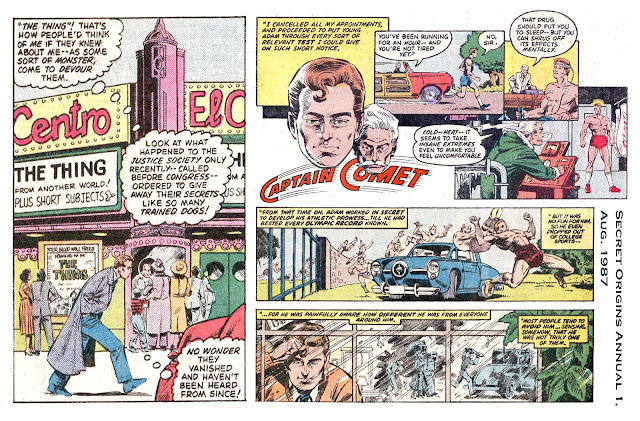June 1951: Comet at Dawn

The conformist Cold War decade of the 1950s had dawned, and the detectives had vanished. They had been the colorful, uncanny ones, the ones who had cheered children from the end of the Depression through the turmoil of World War II into this uneasy peace, this era in which even comic books themselves would become suspect. In All-Star Comics 57 (Feb.-March 1951), the Justice Society of America ended its 11-year run by solving The Mystery of the Vanishing Detectives. The title was writer John Broome’s sly hint to readers of what was to come, but astute fans may already have seen the handwriting in the margins. The Flash had lost his feature in 1949. Green Lantern did too, having already suffered the humiliation of being elbowed aside by a dog — a “wonder dog,” granted, but still. Captain America had taken a back seat to horror, his comic renamed Captain America’s Weird Tales before the hero vanished in 1950. The Human Torch packed it in on a nostalgic note, retelling his origi






